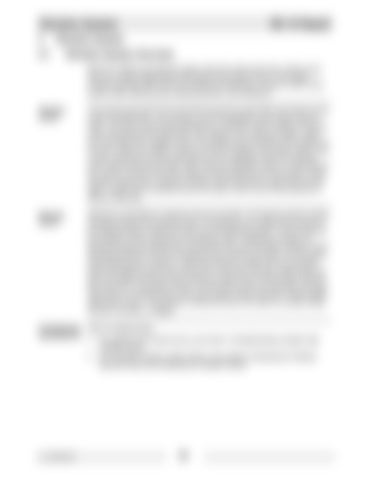Vibration System 5
RD 16 Repair
Vibration System
5.1
Vibration System Overview Both the vibration and steering system share the same open loop, series circuit, driven by a fixed displacement, gear-type pump (exciter pump). The system includes separate relief valves for vibration and steering, an exciter control valve exciter motor, steering valve, steering cylinder, and cooling fan.
Vibration circuit
The exciter pump pulls oil from the tank through the suction filter and sends it to the exciter manifold block. The vibration circuit is controlled by the exciter solenoid valve. This valve is electrically operated by an ON/OFF switch located on the end of the forward/reverse control lever. The vibration circuit has two modes: singledrum and dual drum. Supply oil from the exciter pump is directed to the exciter control valve. When the ON/OFF switch is in the OFF position, the exciter control valve is open, allowing oil to pass downstream to the cooling fan and to the steering valve without driving the exciter motor. When the ON/OFF switch is in the ON position, power is sent to one of two solenoid valves depending on the position of the vibration mode switch. Hydraulic oil flows to the front drum or both drums accordingly. A relief valve connected across the exciter control valve limits pressure to 290 bar (4200 psi).
Steering circuit
Steering is controlled by a steering valve and cylinder. The steering wheel is splinemounted directly to the steering valve. The steering valve reacts to the motion of the steering wheel to direct oil to and from the steering cylinder. Oil returning from the vibration circuit is directed to the steering valve. If steering is inactive, oil passes through the steering valve and back to the return-line filter manifold. When the steering wheel is turned, the steering valve closes and directs oil to the appropriate steering line to extend or retract the cylinder. A relief valve is connected across the steering valve and is set at 45–51 bar (650–725 psi). Relief valves are also connected to each end of the steering cylinder. Each of these relief valves is also set at 45–51 bar (650–725 psi). The oil returning from the vibration and steering functions is directed back to the tank through a return-line filter. A filter bypass relief valve, set at 1.7 bar (25 psi), protects the return-line filter by routing oil past the filter if the filter is clogged.
Troubleshoot- When troubleshooting: ing sequence For systems that vibrate poorly, see section Troubleshooting a System that Vibrates Poorly. For complete vibration system failure, see sections Checking the Vibration Solenoid Valve and Checking the Vibration Switch.
wc_tx000784gb.fm
54






